Table of Contents
ToggleIn a world where software can feel as elusive as a unicorn, Software as a Service (SaaS) swoops in like a superhero, ready to save the day. Imagine accessing powerful applications without the hassle of installations or updates. That’s the magic of SaaS—it’s like having your cake and eating it too, all while someone else does the dishes.
SaaS has transformed how businesses operate, offering flexibility and scalability that traditional software simply can’t match. Whether you’re a startup or a corporate giant, SaaS solutions cater to every need, making it easier to focus on what truly matters: growing your business. So, buckle up as we dive into the delightful world of SaaS and uncover the secrets behind this game-changing technology.
What Is SaaS?
Software as a Service (SaaS) refers to a cloud-based software delivery model. Users access applications over the internet instead of installing them on local devices. This model eliminates the need for manual updates and installations, making it convenient for users.
SaaS applications serve various business needs, offering functionalities from customer relationship management to project management. Popular examples include Salesforce, Google Workspace, and Dropbox. These platforms allow for collaboration and scalability, adapting to the needs of businesses regardless of size.
Cost-effectiveness stands out as a significant advantage of SaaS. Organizations can avoid hefty upfront costs associated with traditional software licenses. Subscription-based pricing often leads to predictability in budgeting while facilitating access to advanced features.
Deployment of SaaS is generally faster compared to traditional software. Users can start utilizing applications within minutes, significantly reducing time to value. Additionally, IT management often becomes less complex, as maintenance and infrastructure are handled by the service provider.
Data security plays a crucial role in SaaS offerings. Many providers invest heavily in security protocols and compliance measures to protect user data. Encryption, regular backups, and access controls help ensure information remains secure.
With ongoing advancements in technology, SaaS continues to evolve. The trend reflects a shift towards remote work and the growing importance of digital solutions. As industries adapt, its impact on business operations becomes even more pronounced.
Key Characteristics of SaaS

SaaS offers distinct features that enhance user experience and business operations.
Multi-Tenancy
Multi-tenancy allows multiple users to share a single software instance while keeping their data separate. This architecture leads to cost savings, as providers can serve various clients on the same infrastructure. Efficiency improves since updates and maintenance occur uniformly, minimizing downtime. As a result, businesses benefit from scalable solutions that adapt to their changing needs without the complexity of managing individual installations.
Scalability
Scalability remains a vital characteristic of SaaS. Users can easily adjust their subscription plans based on requirements, accommodating growth or seasonal fluctuations. Resources such as storage and user accounts expand seamlessly, ensuring performance remains stable even during peak times. This flexibility is essential for businesses aiming to optimize their operational capacity without incurring hefty infrastructure investments.
Accessibility
Accessibility defines the user experience in the SaaS environment. Applications are available from any device with internet connectivity, promoting collaboration among teams located in different geographical areas. Instant access contributes to improved productivity since users can work from anywhere at any time. Moreover, this feature supports remote work, enabling organizations to adapt to modern workforce demands effectively.
Advantages of SaaS
SaaS offers numerous advantages that significantly enhance business operations and efficiency.
Cost-Effectiveness
SaaS reduces upfront costs associated with traditional software purchases. Organizations can avoid hefty license fees since they operate on a subscription model, allowing predictable budgeting. Monthly or annual fees make it easier to manage expenses. Companies access advanced features without large investments, benefiting businesses of all sizes, especially startups. Additionally, savings on IT infrastructure arise from outsourcing maintenance to service providers.
Automatic Updates
Automatic updates eliminate the need for manual intervention. Users receive the latest features and security patches without delay. Providers handle software maintenance, ensuring applications function correctly and securely. This feature reduces the burden on IT teams, enabling them to focus on strategic initiatives. Organizations always operate with up-to-date tools, which enhances productivity and collaboration.
Flexibility
Flexibility characterizes the SaaS model, accommodating various business requirements. Users can easily scale their subscriptions based on demand. This adaptability suits growing businesses and seasonal fluctuations perfectly. Organizations choose plans that align with their needs, ensuring only necessary resources are utilized. Furthermore, teams can access applications from any internet-enabled device, which enables seamless collaboration across different locations.
Common Use Cases
SaaS applications find extensive utility across various sectors. Organizations leverage these solutions to enhance efficiency and productivity.
Business Applications
Customer relationship management software like Salesforce streamlines communication and data management, enabling businesses to track interactions efficiently. Marketing automation tools such as HubSpot help teams automate campaigns and analyze performance metrics. Financial software options provide invoicing and budgeting tools that simplify accounting processes. Furthermore, e-commerce solutions like Shopify empower companies to set up online stores with ease.
Development Tools
Several SaaS platforms offer development environments that facilitate coding and collaboration. GitHub serves as a repository hosting service where developers can manage version control and collaborate on projects. Cloud-based IDEs like CodePen enable real-time coding and testing, simplifying the development process. Continuous integration tools such as CircleCI automate the deployment pipeline, improving software delivery efficiency. Additionally, application performance monitoring solutions assist developers in identifying issues and optimizing applications.
Collaboration Software
Team collaboration platforms such as Slack enhance communication through channel-based messaging and integration with various tools. Project management software like Asana helps teams coordinate tasks and deadlines, improving productivity across departments. Virtual meeting solutions such as Zoom enable face-to-face interactions regardless of location, supporting remote work arrangements. Document collaboration tools like Google Workspace promote real-time editing and sharing, fostering teamwork. These applications collectively drive collaboration, making remote work seamless.
SaaS represents a significant shift in how software is delivered and utilized. Its cloud-based model empowers businesses to access essential applications without the hassle of traditional installations. This flexibility not only enhances productivity but also supports the evolving needs of modern workforces.
As organizations continue to embrace digital transformation, the advantages of SaaS—cost-effectiveness, automatic updates, and scalability—become increasingly vital. With robust security measures in place, companies can confidently leverage these tools to drive growth and collaboration.
The future of SaaS looks promising, as it adapts to the changing landscape of technology and business requirements, ensuring that users remain equipped with the latest innovations to thrive in a competitive environment.




